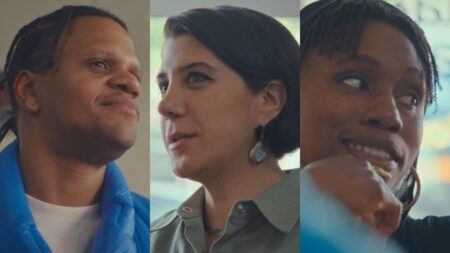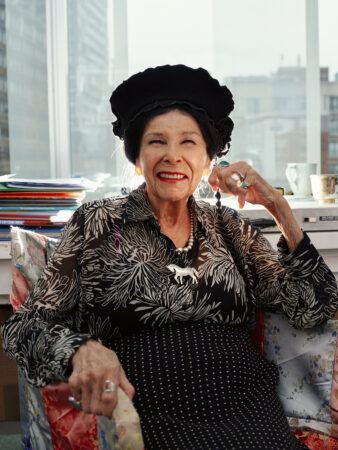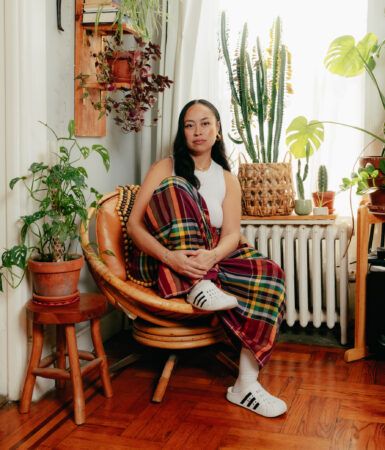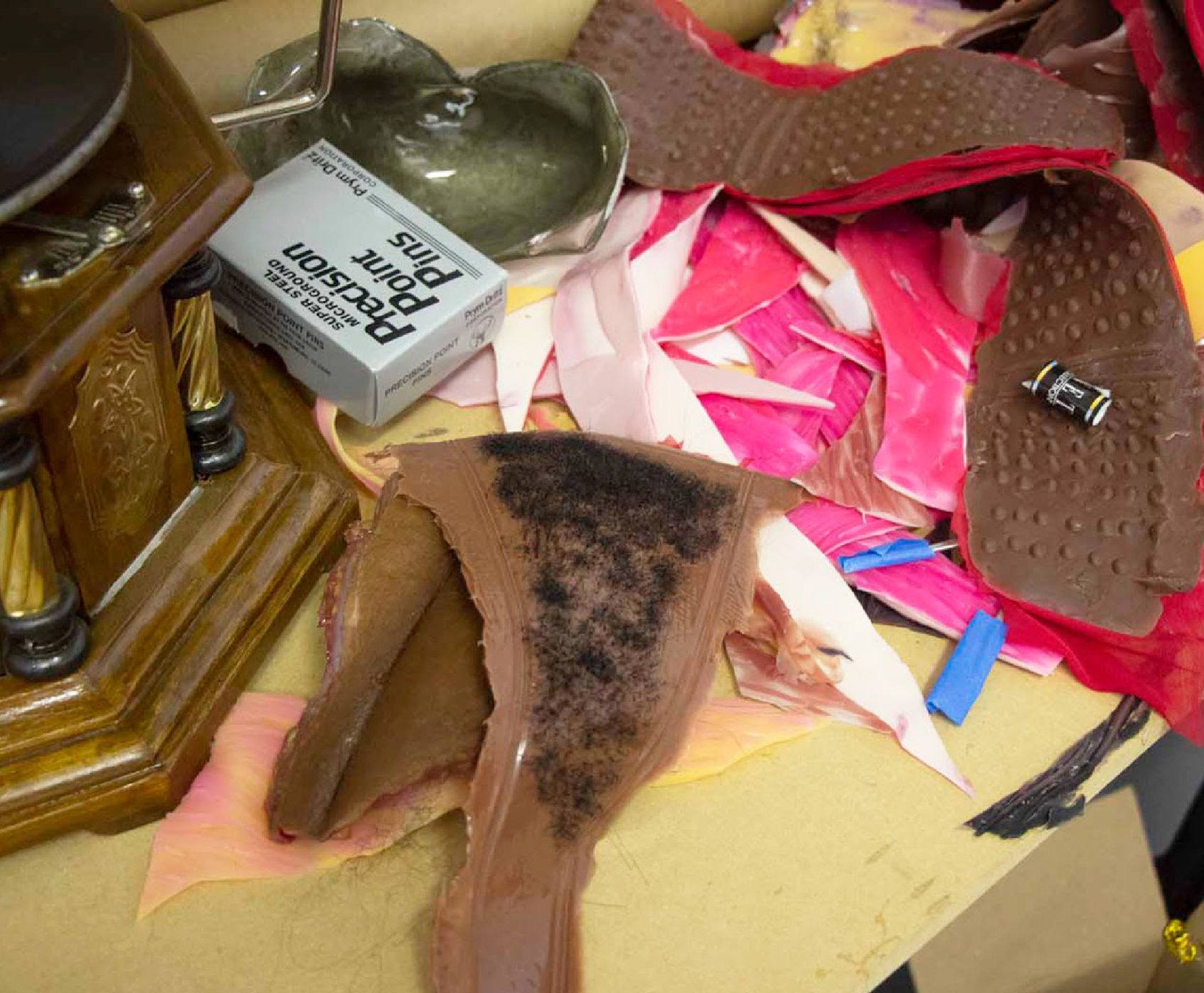

In the Studio
Doreen Garner redefines body-building in sculpture and ink.

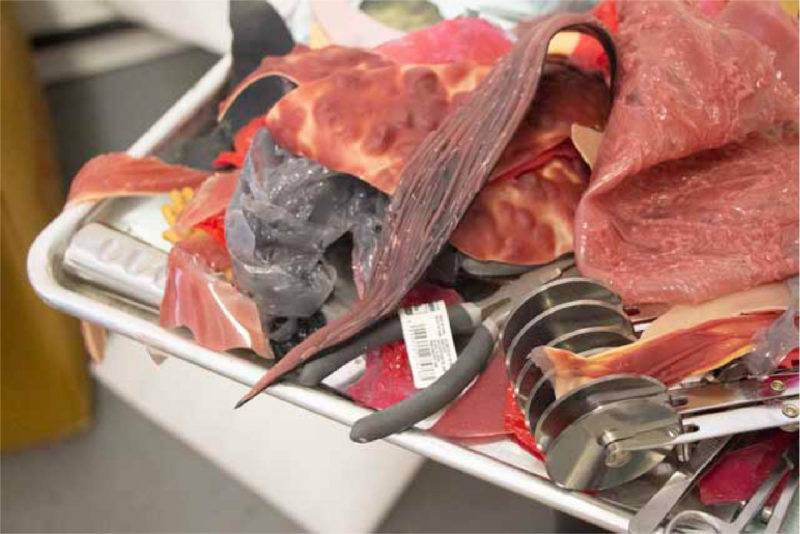

Art21 You’re well known for creating large sculptures that emulate the human form, but your background is in glass blowing. What inspired your transition between materials?
Doreen Garner Right now I work mostly in silicone, and random materials that get mixed into the silicone, but it started from working with glass at the Tyler School of Art in Philadelphia. It’s a challenging material, and is expensive outside of school. I found that it has a lot of similarities with the body and how the body is moldable, and death and rigor mortis. With a lot of glass casting, you take molds of objects and cast them in wax. That usually includes silicone or urethane rubber, which resembled skin to me, more than glass. Now I spend all my money on buckets of silicone.
Glass led you to wax and silicone, but how did your practice evolve into tattoo?
I’ve always just been interested in tattooing, especially when thinking about the body and skin. My friend and licensed tattoo artist, Tamara Santibañez, told me that many tattoo artists are self-taught, so I got my tattoo license, bought the equipment, and started practicing on friends on my own terms, and to avoid any unnecessary labor and ego. Tattooing was full circle moment and has informed my visual art practice overall.
How does the tattoo community differ from the art world?
I somehow insert myself into these communities or industries that are overrun by straight white males, and so I feel like it’s very similar to the glass community, or the contemporary art world. There’s just so many connecting tissues. I find that what I’m trying to do is basically create this presence where it’s more inviting for people of color to become tattoo artists, because there are so many people that want to get tattooed by people of color, and thinking about terms of safety and comfortability and vulnerability when you let someone inflict pain and violence on your body? So, in that way, my presence in the tattoo industry, I hope, is bringing more people in.
I try to focus on images that are celebrating the black experience and black culture and all the things that it’s contributed to Americanness in ways that I don’t feel like it has been displayed in tattoo shops across the United States. So it’s providing the imagery that people want, and providing the people that people want to get tattooed by.
What types of imagery do you feature in your tattoo flash sheets that embody the mission of the project—celebrating Black culture and histories?
I started thinking about a lot of the documentation from my work; stories where black people were being exploited by the medical industry that many people don’t know about. So I was trying to use tattoo as an educational tool so the illustrations would be reflective of the story. One of my flash designs—a wrench with teeth—speaks about Joyce Heff. She was purchased by P.T. Barnum who would get her blackout drunk on whiskey, pull her teeth out, just for show, and then put her on display as being the oldest woman alive. I consider it my responsibility to translate these histories into a visual image. There is history behind an image, which hopefully people will share when asked, “Oh, why did you get that?”
Images of empowerment is one part of the project, but what other themes do you explore in your tattoo practice?
Well, power is a big thing for me, and vulnerability and trauma. The first tattoo that I ever did, I ended up doing on myself, and with a few friends in the room. I set up the machine and I was about to make the first mark, and there were so many things going on in my head, like, “I don’t have to do this; I can just stop,” but there’s also this pressure from the audience. So I started to make the marks, and it was like, “Oh man, this hurts so bad.” I didn’t want to look at it, but I had to because I’m the one making this permanent mark, and I’m in control. I was interested in that anxiety and uneasiness that I felt.
As the tattoo artist, do you think of each participant or client of yours as an art collector?
I think about tattooing in a completely different way, in regards to access to art and artists. One of the things I struggle with is if somehow a collector gets into a bind and has to put something up for resale or auction—it’s just really problematic for what my work is about—and the idea now that I can create work and people can collect the work and it’s never going to go anywhere is really amazing. You’re going to have it for life.
